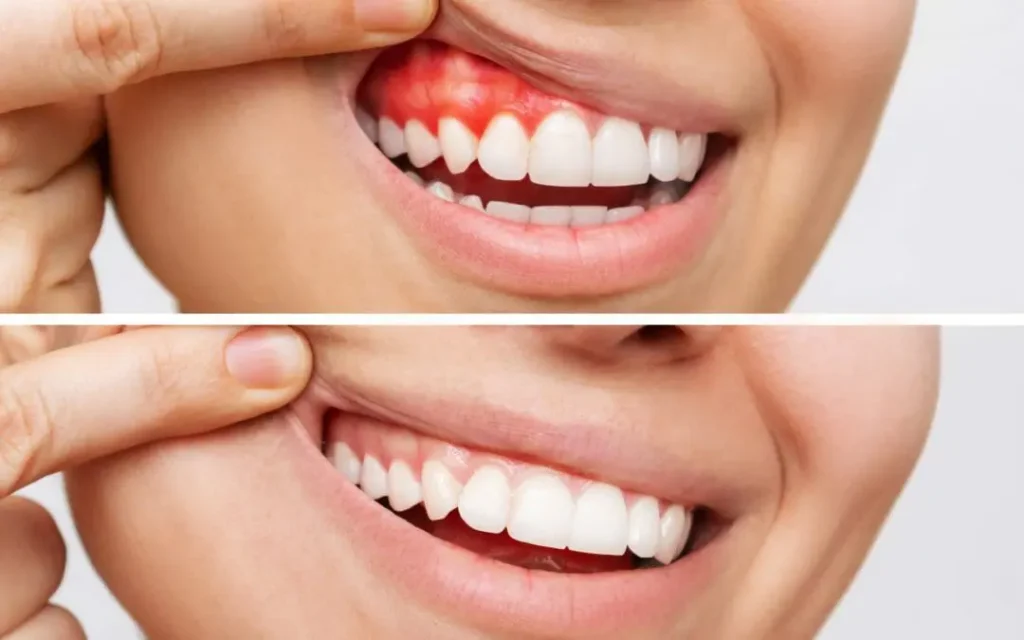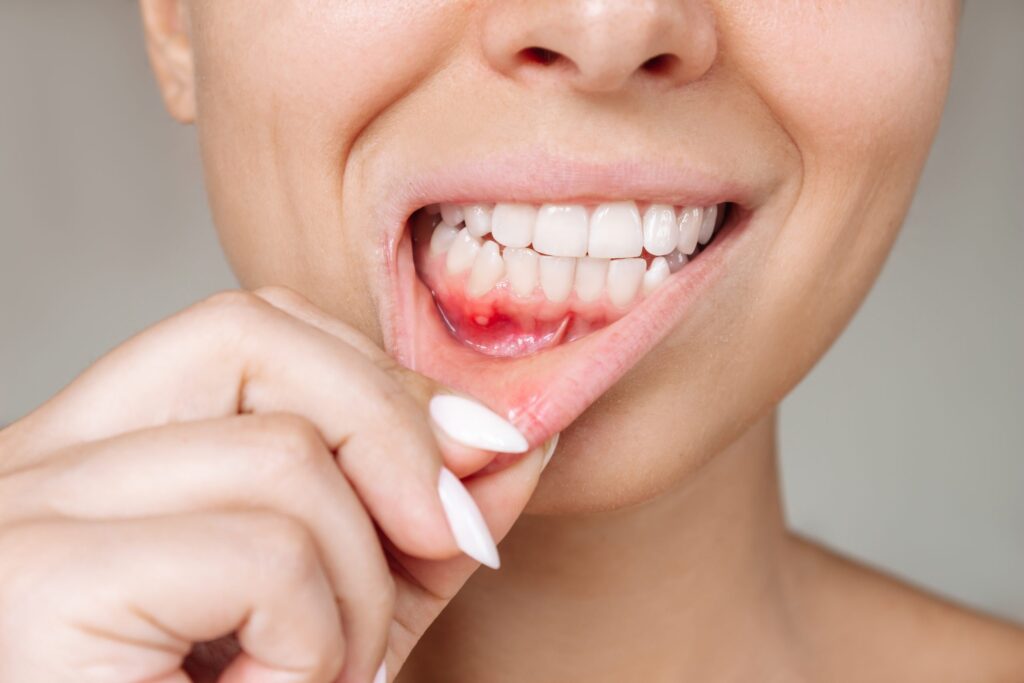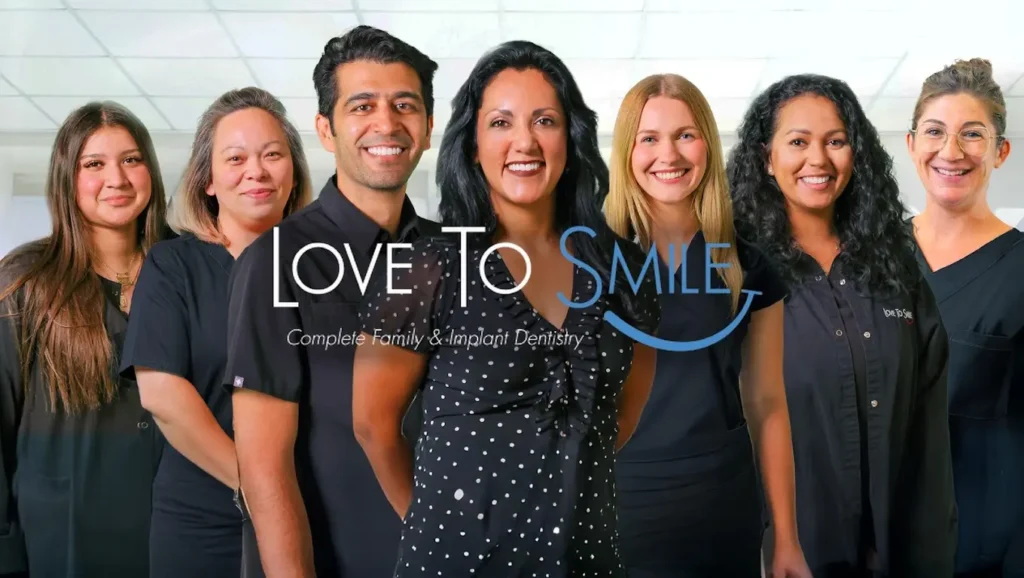Healthy gums are the foundation of a healthy smile. Yet gum disease—also called periodontal disease—is one of the most common dental problems in adults. The CDC estimates that nearly half of Americans over 30 have some form of gum disease, and many don’t even realize it.
At Love to Smile Dentistry, we see firsthand how catching gum disease early can prevent serious oral health issues. Whether your gums feel tender, bleed when you brush, or you’ve just noticed bad breath that won’t go away, this guide will help you understand what’s happening and what to do next.

What Is Gum Disease?
Gum disease is an infection of the tissues that hold your teeth in place. It starts when plaque—a sticky film of bacteria—builds up along the gumline. If not removed through brushing, flossing, and regular cleanings, plaque hardens into tartar, irritating your gums and causing inflammation.
Over time, this inflammation can damage the soft tissue and bone supporting your teeth, leading to tooth loss if left untreated. Gum disease develops in two main stages: gingivitis and periodontitis.
Gingivitis
The early stage of gum disease. Gums become red, swollen, and may bleed during brushing. Gingivitis is reversible with proper care and professional cleanings.
Periodontitis
The advanced stage of gum disease. Infection spreads deeper below the gumline, causing bone loss, gum recession, and sometimes loose teeth. Treatment at this stage focuses on controlling the infection and preventing further damage.
Early Warning Signs of Gum Disease
Many people don’t feel pain until gum disease becomes serious. Recognizing early symptoms is key to stopping it in its tracks. Watch for:
- Red, swollen, or tender gums
- Bleeding when brushing or flossing
- Receding gums or longer-looking teeth
- Persistent bad breath or bad taste
- Loose or shifting teeth
- Changes in bite alignment
If you’ve noticed any of these signs, schedule an exam at Love to Smile. Early treatment can often reverse gum disease before it becomes permanent.

What Causes Gum Disease?
The main cause is plaque buildup, but several factors increase your risk:
- Poor brushing and flossing habits
- Smoking or tobacco use
- Genetics and family history
- Hormonal changes during pregnancy
- Diabetes or other systemic health issues
- Certain medications that reduce saliva
Good daily habits and routine dental visits are your best defense. Even with great hygiene, professional cleanings are essential to remove tartar that can’t be reached at home.
How We Treat Gum Disease at Love to Smile
Comprehensive Evaluation
We start by measuring gum pocket depth around each tooth and taking digital X-rays if needed. This helps us understand how far the infection has progressed.
Scaling and Root Planing
Also known as “deep cleaning,” this procedure removes plaque and tartar below the gumline and smooths tooth roots so gums can heal and reattach. Local anesthesia keeps you comfortable throughout the process.
Antibiotic Therapy
In some cases, we use topical or oral antibiotics to reduce bacteria and speed up healing. This helps control infection and inflammation between cleanings.
Maintenance and Follow-Up
Once the gums begin healing, consistent follow-up cleanings are crucial. We’ll help you set up a maintenance plan to keep your gums healthy long-term.
Preventing Gum Disease at Home
Professional care is vital, but what you do daily matters most. Follow these tips to lower your risk:
- Brush twice a day with a soft-bristle toothbrush
- Floss daily to clean between teeth and below the gumline
- Use an antimicrobial or fluoride mouthwash
- Eat a balanced diet and limit sugary snacks
- Don’t smoke—tobacco makes gum disease worse and slows healing
- Schedule regular cleanings at least twice a year
Gum Health and Whole-Body Wellness
Gum disease doesn’t just affect your mouth—it’s linked to heart disease, diabetes, and even pregnancy complications. Inflammation in your gums can contribute to inflammation throughout the body. Treating gum disease early protects both your oral and overall health.

Frequently Asked Questions About Gum Disease Treatment
Can gum disease be cured?
Early gum disease (gingivitis) is reversible with professional cleanings and good home care. Advanced gum disease (periodontitis) can’t be fully cured but can be controlled to prevent further damage.
Does treatment hurt?
Deep cleanings are done under local anesthesia, so you stay comfortable. Some soreness or sensitivity afterward is normal and fades quickly.
How often should I get my gums checked?
Every six months is standard, but patients with gum disease may need more frequent visits for maintenance.
Can gum disease cause tooth loss?
Yes. If untreated, gum disease can destroy the bone and tissue that hold teeth in place. Early treatment prevents this and can often save teeth at risk.
How much does gum disease treatment cost?
Costs vary based on the stage of disease and treatment type. During your exam, we’ll explain your options and provide a transparent estimate. Many dental insurance plans cover part of periodontal therapy.

Protect Your Smile with Gum Disease Treatment in Johnson County
Healthy gums mean a stronger, more confident smile. If you’re noticing bleeding, swelling, or tenderness, don’t wait—gum disease only gets harder to treat over time. Let the team at Love to Smile Dentistry help you restore your gum health and protect your teeth for years to come.
Schedule your appointment today through our contact page, and take the first step toward a cleaner, healthier smile.
;)
